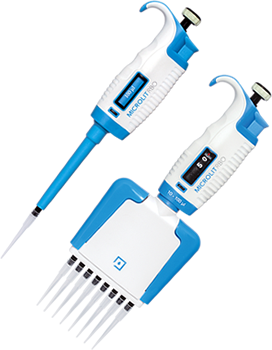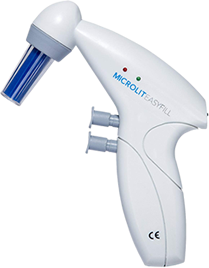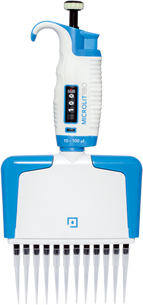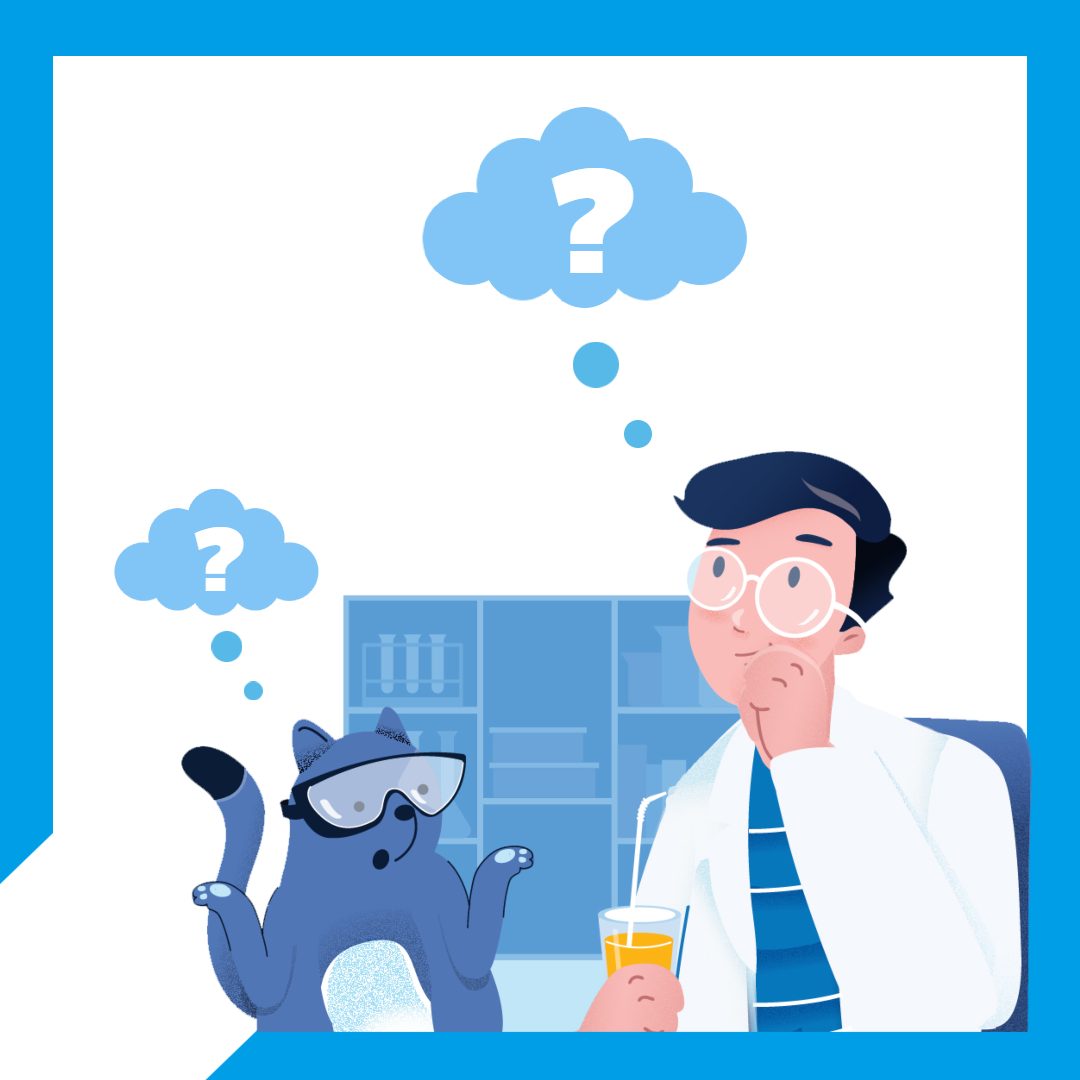Viscosity is defined by the flow resistance of a layer of fluid relative to its adjacent layer. In plain words, viscosity is the opposite of a liquid’s property of fluidity. It can be categorized into dynamic and kinematic viscosity and is computed in millipascals per second.
Viscous liquids are very common in research labs and are either used as buffer compounds or in their pure forms. Commonly found viscous liquids in laboratories include glycerol, DMSO, Tween® 20 and Triton X-100. These liquids are mostly used in food, pharmaceuticals, cosmetics and other consumer product industries.
When the viscosity of liquid increases, the complexity of pipetting becomes manifold. As there is higher friction in molecules, the ability to flow or move is very limited, which makes the pipetting process very challenging. For instance, a viscous liquid like glycerol flows in and out of the pipette tip very slowly. In addition, while dispensing viscous liquids, a film is formed inside the walls of the pipette tip that moves more gradually than rest of the liquid. If the pipette tip is withdrawn fast from the vessel, air bubbles are also drawn into the tip, which reduces the overall volume of the liquid dispensed.
One can achieve better results by decreasing the speed of pipetting. If you aspirate the liquid slowly, it allows it to rise to an equilibrium level, and if you dispense slowly, it decreases the impact of the inner film formed inside the pipette tip. Further, researchers use the reverse pipetting technique to reduce the impact of liquid retention. Another helpful tip is to use wide-orifice tips, which enable the liquid to move more freely and easily through the tip orifice.
In order to enhance the pipetting accuracy for highly viscous fluids, you can consider the following suggestions:
- Reverse Pipetting: As it is difficult to completely dispense the viscous liquid from the pipette tip, reverse pipetting is an effective approach. You should aspirate more amount of the required sample, dispense the desired volume and discard the remaining liquid.
- Use Low Retention Tips: Using low retention tips can be helpful in pipetting viscous liquids as they reduce the adherence of liquids to the wall of the pipette tip, thereby, maintaining the same dispensed liquid volume.
- Employ Steady Motion: While pipetting viscous liquids, you should consciously make an effort to use steady motions between aspirating and dispensing. This will help in preventing any damage to the pipette, and reduce any extra liquid getting stuck on the pipette tip or loosening of the pipette tip.
- Immerse the Tip for Longer Duration: Another helpful tip is to wait for 2-3 seconds after aspiration, as well as dispensing.
- Adjust the Speed: Use less speed than usual to dispense high-viscosity liquids.
How to Perform Reverse Pipetting?
- Use an adjustable volume pipette and set it to the required volume setting.
- Load the tip on the pipette and hold it vertically on the vessel.
- Press the plunger completely (go past the second stop).
- Immerse the pipette tip in the liquid completely.
- Release the plunger slowly while keeping the pipette tip inside the liquid vessel.
- Take out the pipette slowly.
- Now, dispense into the other vessel by gradually pressing till the first stop (do not press beyond the first stop).
- Take the tip and the pipette slowly from the container.
- If you see any liquid volume inside the tip, blow this residual volume out into a different vessel and dispose-off the pipette tip.
In certain scenarios, reverse pipetting is not enough for enabling the transfer of viscous liquids. In these cases, researchers use positive displacement pipettes. For positive displacement pipettes, the liquid sample cannot come in direct contact with the pipette. Instead, fluids are aspirated and dispensed through a piston via a capillary. Therefore, there is no formation of air cushion, which indirectly nullifies the effect of liquid viscosity on the volume being dispensed.
How Microlit products can help with pipetting of viscous liquids?
Microlit NERO micropipettes are able to optimize sample preparation for processes, such as HPLC, pharmaceutical formulation, qPCR/PCR and other biochemical procedures. They are designed with μAir™ technology, a unique feature that helps in reducing extra spaces and dead air space between the piston and tip cone. This results in reduced air compression that allows the user to get highly precise readings while handling viscous solutions.
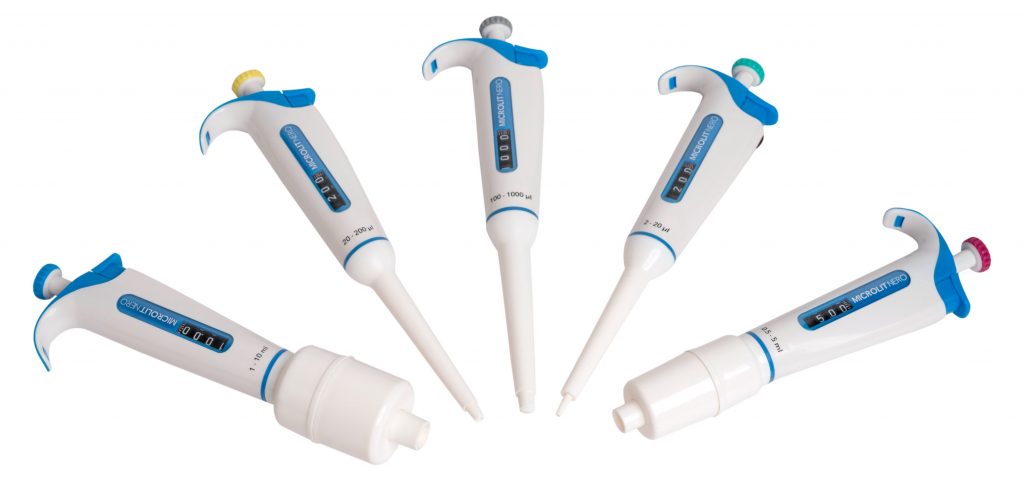
In addition, Microlit’s pipette tips – ProTip™ give you an alternative to choose from a range of low-retention tips that can work exceptionally well with viscous fluids. Our pipette tips are manufacturer recommended and are compatible with Microlit RBO and Microlit NERO micropipettes. As they are much more hydrophobic than standard tips, they enable Clean Release, which allows highly viscous fluids to be aspirated and dispensed completely, thus minimizing errors and providing accurate results.






 7423
7423

